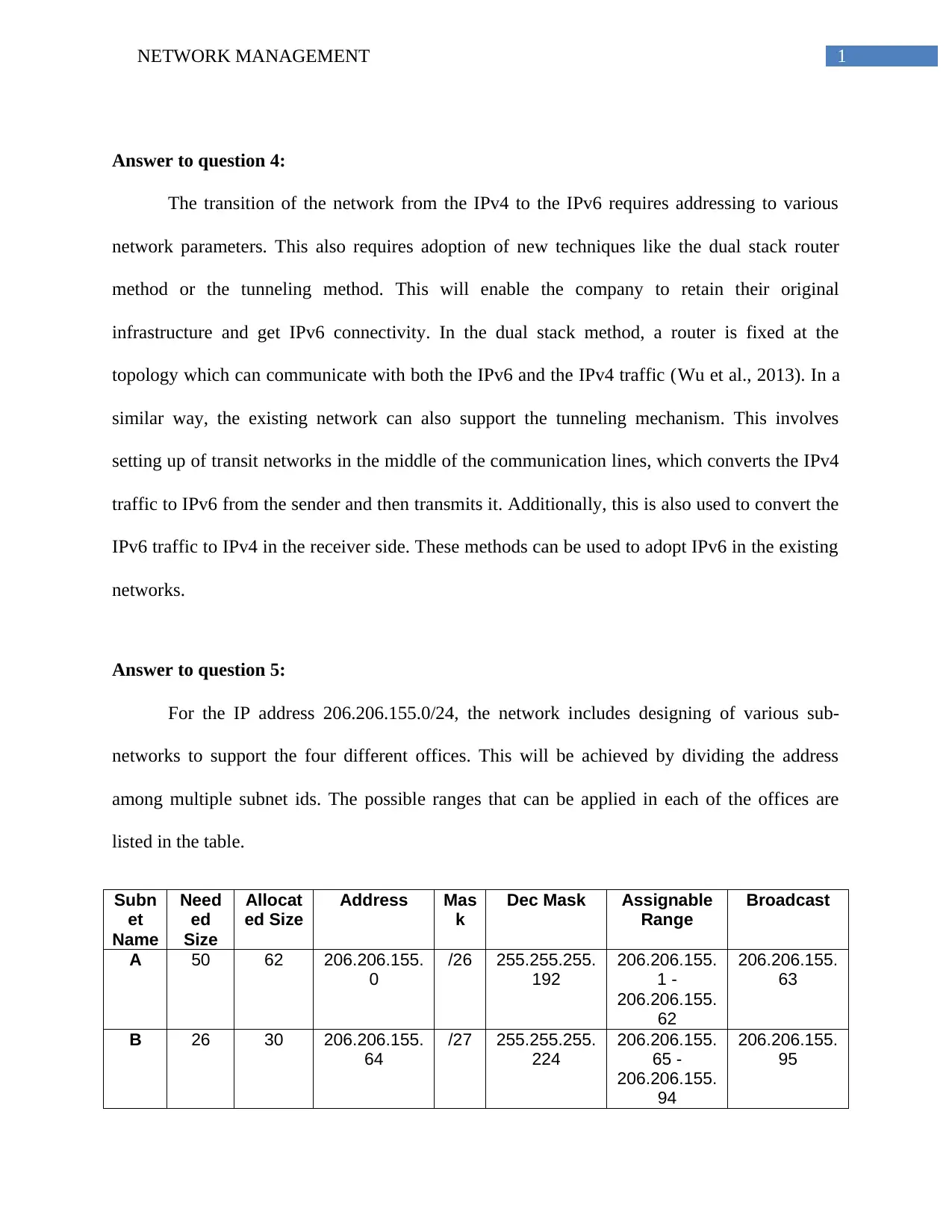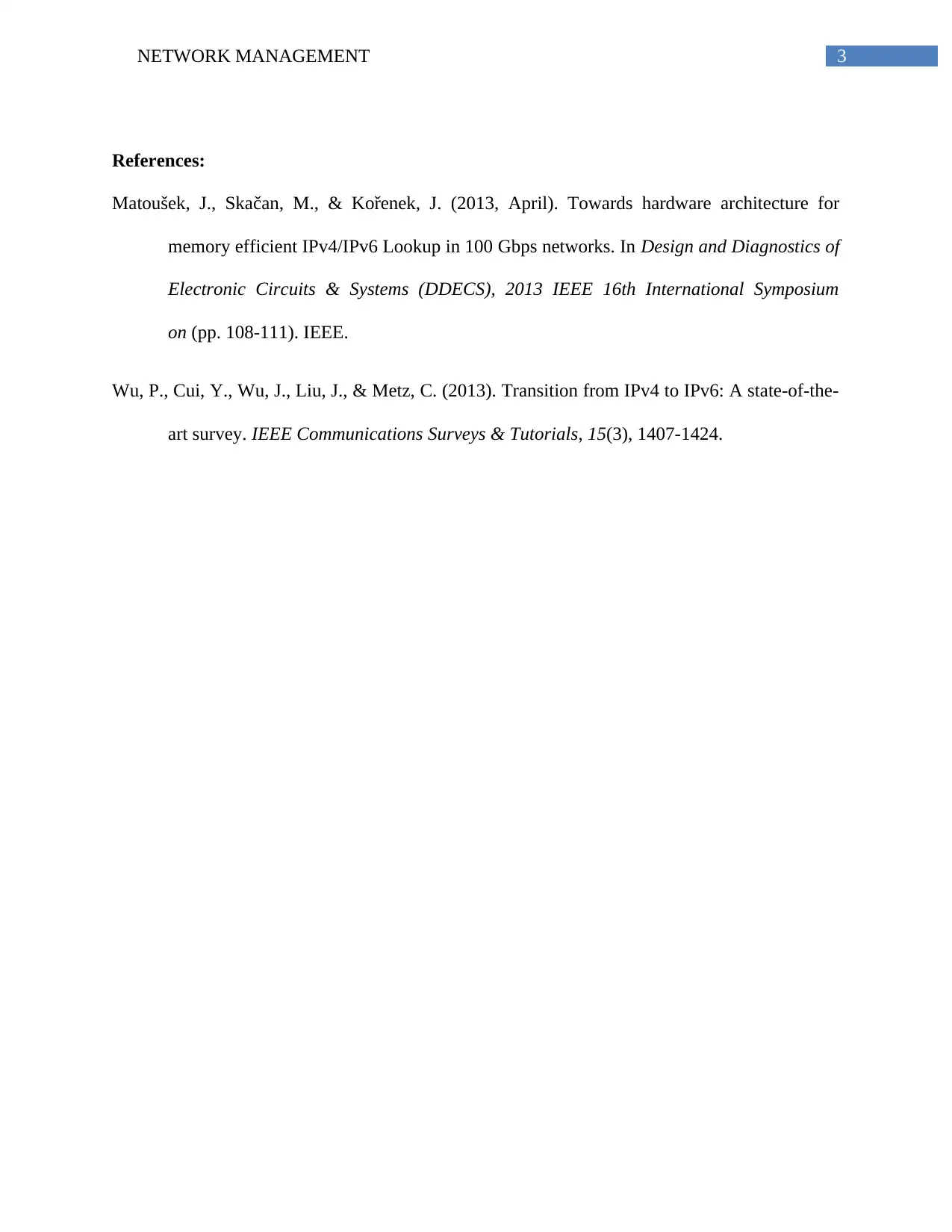Network Management Assignment
VerifiedAdded on 2020/04/13
|4
|401
|76
AI Summary
This network management assignment addresses two key areas: transitioning from IPv4 to IPv6 and subnet design. The student explains various methods for smooth IPv6 adoption, including dual-stack routing and tunneling. They then demonstrate their understanding of subnetting by allocating IP address ranges for four different offices using the 206.206.155.0/24 network.
Contribute Materials
Your contribution can guide someone’s learning journey. Share your
documents today.
1 out of 4









![[object Object]](/_next/static/media/star-bottom.7253800d.svg)